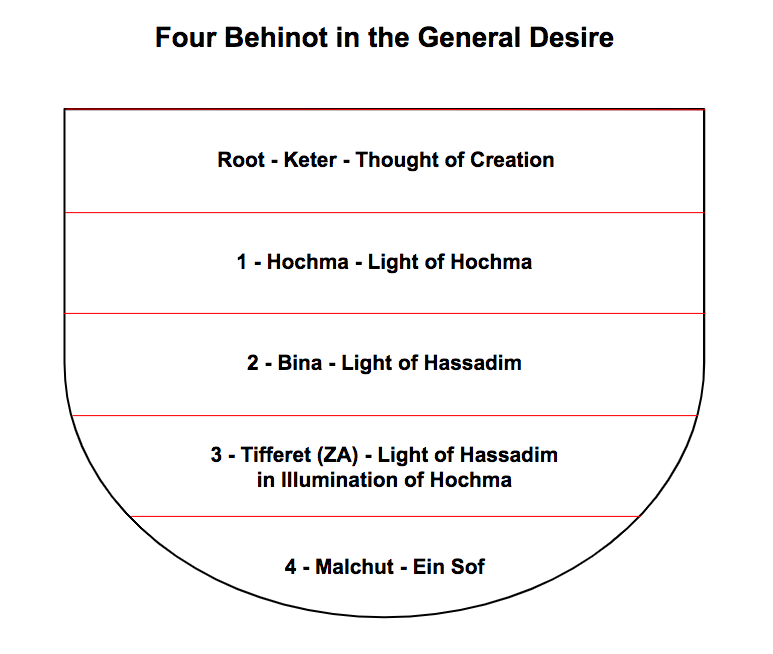Lessons #16
In the first part of the lesson, we will learn the Rabash's article “Love of Friends - 1” In the second part of the lesson, we will continue exploring Kabbalistic terms based on Baal HaSulam's book 'The Study of the Ten Sefirot' and continue clarifying the concept of the 'Four Behinot' [stages] in the desire.
Part 1. RABASH "Love of Friends - 1"
Part 2: Preface to the Wisdom of Kabbalah, pp. 15-16

15) Thus, new vessels were made in the Partzufim of Kedusha instead of phase four after the first restriction. They were made of the reflected light of the coupling by striking in the screen.
Indeed, we should understand this reflected light and how it became a vessel of reception, since initially it was but a light that was rejected from reception. Thus, it now serves in an opposite role from its own essence.
I shall explain that with an allegory from life. Man’s nature is to cherish and favor the quality of bestowal, and to despise and loathe reception from one’s friend. Hence, when one comes to one’s friend’s house and he [the host] invites him for a meal, he [the guest] will decline even if he is very hungry, since in his eyes it is humiliating to receive a gift from his friend.
Yet, when his friend sufficiently implores him until it is clear that he would do his friend a big favor by eating, he agrees to eat as he no longer feels that he is receiving a gift and that his friend is the giver. On the contrary, he [the guest] is the giver, doing his friend a favor by receiving this good from him.
Thus, you find that although hunger and appetite are vessels of reception designated for eating, and that person had sufficient hunger and appetite to receive his friend’s meal, he still could not taste a thing due to the shame. Yet, as his friend implored him and he rejected him, new vessels for eating began to form in him, since the power of his friend’s pleading and the power of his own rejection, as they accumulated, finally added up to a sufficient amount that turned the measure of reception into a measure of bestowal.
In the end, he saw that by eating, he would do a big favor and bring great contentment to his friend. In that state, new vessels of reception to receive his friend’s meal were born in him. Now it is considered that his power of rejection has become the essential vessel in which to receive the meal, and not the hunger and appetite, although they are actually the usual vessels of reception.
16) From the above allegory between two friends, we can understand the matter of coupling by striking and the reflected light that rises through it, which then becomes new vessels of reception for the upper light instead of phase four. We can compare the upper light, which strikes the screen and wants to expand into phase four, to the pleading to eat, because as he yearns for his friend to receive his meal, the upper light desires to expand to the receiver. And the screen, which strikes the light and repels it, can be likened to the friend’s rejection and refusal to receive the meal, since he rejects his favor.
Just as you find here that precisely the refusal and rejection have been inverted and become appropriate vessels to receive his friend’s meal, you can imagine that the reflected light that rises by the striking of the screen and its rejection of the upper light became new vessels of reception for the upper light instead of phase four, which served as a vessel of reception prior to the first restriction.
However, this was established only in the Partzufim of Kedusha of ABYA, not in the Partzufim of the shells, and in this world, where phase four itself is considered the vessel of reception. Hence, they are separated from the upper light, since the disparity of form in phase four separates them. For this reason, the shells are considered wicked and dead, as they are separated from the Life of Lives by the will to receive in them, as it is written in Item 13.